|
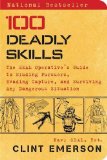 |
100 Deadly Skills: The SEAL Operative's Guide to Eluding Pursuers, Evading Capture, and Surviving Any Dangerous Situation
Clint Emerson |
|
A hands-on, practical survival guide from retired Navy SEAL Clint Emerson—adapted for civilians from actual special forces operations—to
eluding pursuers, evading capture, and surviving any dangerous situation.
In today’s increasingly dangerous world, threats to your personal safety are
everywhere. From acts of terror to mass shootings, and from the unseen (and sometimes virtual) matrix of everyday crime, danger is no longer confined to dark
alleys or unstable regions. Potentially life-threatening circumstances can arise anywhere, anytime, and Clint Emerson—former Navy SEAL—wants you to be
prepared.
100 Deadly Skills contains proven self-defense skills, evasion tactics, and immobilizing maneuvers—modified from the world of black ops—to
help you take action in numerous “worst case” scenarios from escaping a locked trunk, to making an improvised Taser, to tricking facial recognition software.
With easy-to-understand instructions and illustrations, Emerson outlines in detail many life-saving strategies and teaches you how to think and act like a member
of the special forces.
This complete course in survival teaches you how to prevent tracking, evade a kidnapping, elude an active shooter, rappel down the
side of a building, immobilize a bad guy, protect yourself against cyber-criminals, and much more—all using low-tech to “no-tech” methods. Clear, detailed, and
presented in an easy-to-understand and execute format, 100 Deadly Skills is an invaluable resource. Because let’s face it, when danger is imminent, you don’t have
time for complicated instructions. |
|
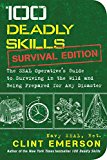 |
100 Deadly Skills: Survival Edition: The SEAL Operative’s Guide to Surviving in the Wild and Being Prepared for Any Disaster
Clint Emerson |
|
These 100 skills, adapted for civilians from actual field experiences of special forces operations, offer a complete hands-on and practical
guide to help you survive in the wild no matter the climate or terrain; be prepared for any crisis; and have the critical life-saving knowledge for staying safe
in any hostile environment or disaster.
Yesterday’s survival guide is no longer relevant. 100 Deadly Skills: Survival Edition is what you need for today’s
world, combining survival hacks developed on the battlefield with the low-tech tools you have on hand. This book is your essential prep manual, from securing
shelter, building fire, finding food, and navigating back to civilization no matter the environment to thinking like a special forces soldier so that you can
survive a hostage situation, an active shooter, a suicide bomber, or a terrorist threat on the subway, and even apply trauma medicine as a first responder.
Full of specific scenarios to help you get in the mindset of survival, 100 Deadly Skills: Survival Edition is better than a Swiss Army knife whether you’re lost
at sea, forced to land a plane, fighting off a bear, or deciding whether to run, hide, or fight. Next to each skill are easy-to-grasp detailed illustrations,
because when you need to survive the apocalypse, you don’t have time for complicated instructions. |
|
 |
American Gun: A History of the U.S. in Ten Firearms
Chris Kyle |
|
At the time of his tragic death in February 2013, former Navy SEAL Chris Kyle, the top
sniper in U.S. military history, was finishing one of the most exciting missions of his life: a remarkable
book that retold American history through the lens of a hand-selected list of firearms. Kyle masterfully
shows how guns have played a fascinating, indispensable, and often underappreciated role in our national
story.
"Perhaps more than any other nation in the world," Kyle writes, "the history of the United
States has been shaped by the gun. Firearms secured the first Europeans' hold on the continent, opened the
frontier, helped win our independence, settled the West, kept law and order, and defeated tyranny across the
world."
Drawing on his unmatched firearms knowledge and combat experience, Kyle carefully chose ten
guns to help tell his story: the American long rifle, Spencer repeater, Colt .45 revolver, Winchester rifle,
Springfield 1903 rifle, Thompson sub-machine gun, 1911 pistol, M1 Garand, .38 Special police revolver, and
the M-16 rifle platform Kyle himself used as a SEAL. Through them, he revisits thrilling turning points in
American history, including the single sniper shot that turned the tide of the Revolutionary War, the
firearms designs that proved decisive at Gettysburg, the "gun that won the West," and the weapons that gave
U.S. soldiers an edge in the world wars and beyond. This is also the story of how firearms innovation,
creativity, and industrial genius has constantly pushed American history—and power—forward.
Filled
with an unforgettable cast of characters, Chris Kyle's American Gun is a sweeping epic of bravery, adventure,
invention, and sacrifice. |
|
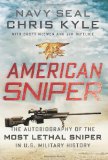 |
American Sniper: The Autobiography of the Most Lethal Sniper in U.S. Military History
Chris Kyle |
|
Gripping, eye-opening, and powerful, American Sniper is the astonishing autobiography of
SEAL Chief Chris Kyle, who is the record-holding sniper in U.S. military history. Kyle has more than 150
officially confirmed kills (the previous American record was 109), though his remarkable career total has not
been made public by the Pentagon.
In this New York Times bestselling memoir, Kyle shares the true
story of his extraordinary decade-long career, including his multiple combat tours in Iraq (Operation Iraqi
Freedom) and elsewhere from 1999-2009.
Kyle’s riveting first-person account of how he went from Texas
rodeo cowboy to expert marksman and feared assassin offers a fascinating view of modern-day warfare and one
of the most in-depth and illuminating looks into the secret world of Special Ops ever written.
|
|
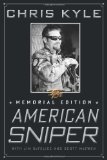 |
American Sniper: Memorial Edition
Chris Kyle |
|
Updated with more than seventy-five pages of new material, this memorial edition of
American Sniper contains remembrances and tributes from Chris Kyle’s family and friends, including his wife
Taya and fellow Navy SEAL Marcus Luttrell. This special Memorial Edition of his smash #1 bestselling memoir
celebrates and honors Chris’s life and his accomplishments—both his heroics on the battlefield and at home,
supporting veterans and their families.
To the enemies he hunted he was al-Shaitan—“the devil.” To his
Navy SEAL brothers, he was “the legend.” From 1999 to 2009, U.S. Navy SEAL Chris Kyle was the deadliest
American sniper in United States military history. In February 2013, he was tragically killed while trying
to help a fellow veteran.
This expanded Memorial Edition of his extraordinary #1 New York Times
bestseller—one of the greatest war memoirs of all time—salutes his achievements and commemorates his
enduring legacy.
|
|
 |
American Wife: A Memoir of Love, War, Faith, and Renewal
Taya Kyle |
|
*Autographed by the author.
The widow of “American Sniper” Chris Kyle shares their private story: an unforgettable testament to the power of love and faith in the face of
war and unimaginable loss--and a moving tribute to a man whose true heroism ran even deeper than the legend.
In early 2013, Taya Kyle and her husband Chris
were the happiest they ever had been. Their decade-long marriage had survived years of war that took Chris, a U.S. Navy SEAL, away from Taya and their two children
for agonizingly long stretches while he put his life on the line in many major battles of the Iraq War. After struggling to readjust to life out of the military,
Chris had found new purpose in redirecting his lifelong dedication to service to supporting veterans and their families. Their love had deepened, and, most special
of all, their family was whole, finally.
Then, the unthinkable. On February 2, 2013, Chris and his friend Chad Littlefield were killed while attempting to
help a troubled vet. The life Chris and Taya fought so hard to build together was shattered. In an instant, Taya became a single parent of two. A widow. A young
woman facing the rest of her life without the man she loved.
Chris and Taya’s remarkable story has captivated millions through Clint Eastwood’s blockbuster,
Academy Award-winning film American Sniper, starring Bradley Cooper as Chris and Sienna Miller as Taya, and because of Chris’s bestselling memoir, in which Taya
contributed passages that formed the book’s emotional core. Now, with trusted collaborator Jim DeFelice, Taya writes in never-before-told detail about the hours,
days, and months after his shocking death when grief threatened to overwhelm her. Then there were wearying battles to protect her husband’s legacy and
reputation.
And yet throughout, friendship, family, and a deepening faith were lifelines that sustained her and the kids when the sorrow became too much.
Two years after her husband’s tragic death, Taya has found renewed meaning and connection to Chris by advancing their shared mission of “serving those who serve
others,” particularly military and first-responder families. She and the children now are embracing a new future, one that honors the past but also looks forward
with hope, gratitude, and joy.
American Wife is one of the most remarkable memoirs of the year -- a universal chronicle of love and heartbreak, service and
sacrifice, faith and purpose that will inspire every reader. |
|
 |
The Art of War
Sun Tzu |
|
Written 2500 years ago, The Art of War is the oldest military treatise in the world, a
classic study of competition and rivalry that has been utilized by soldiers ever since. Napoleon studied its
strategies and tactics. It is required reading for intelligence personnel in the United States Marine Corps.
"Warriors" of Wall Street and in corporation cultures rely on it for guidance. It's even been rumored to help
players win at the board game Risk. This 1910 translation by the British Museum's Lionel Giles is the most
popular one available, a highly readable version of this still startlingly relevant text. Lionel Giles also
translated The Book of Mencius and Sayings of Confucius. Sun Tzu lived in China in the 6th century B.C. and
was a contemporary of Confucius.
|
|
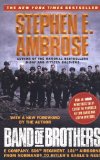 |
Band of Brothers: E Company, 506th Regiment, 101st Airborne from Normandy to Hitler's Eagle's Nest
Stephen E. Ambrose |
|
As good a rifle company as any in the world, Easy Company, 506th Airborne Division, U.S.
Army, kept getting the tough assignments -- responsible for everything from parachuting into France early
D-Day morning to the capture of Hitler's Eagle's Nest at Berchtesgaden. In Band of Brothers, Ambrose tells
of the men in this brave unit who fought, went hungry, froze, and died, a company that took 150 percent
casualties and considered the Purple Heart a badge of office. Drawing on hours of interviews with survivors
as well as the soldiers' journals and letters, Stephen Ambrose recounts the stories, often in the men's own
words, of these American heroes.
|
|
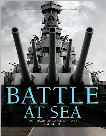 |
Battle at Sea: 3,000 Years of Naval Warfare
R. G. Grant |
|
Battle at Sea looks at every aspect of the story of warfare on, above, and under the sea,
including classic naval engagements daring raids carried out on ships in harbor, and landing operations such
as D-Day, where control of the sea was essential to transport land forces to new battlefronts. Special
features within the book include: graphic and dramatic battle catalogs relating the stories of the men,
ships, and organizations behind history's greatest naval conflicts; spectacular 3D digital artworks following
the crucial stages of key battles, step by step; profiles of naval crew - the captain, officers, gunners,
quartermaster, surgeon, cooks, and boatswains - exploring their changing roles throughout history; eyewitness
accounts recreating the experience of the opposing forces in key battles, whether preparing for conflict, in
the heat of battle, or dealing with the aftermath of an engagement; photographic tours revealing the
intricate details of surviving or reconstructed warships-from an Ancient Greek trireme to a nuclear-powered
submarine; features on weapons and technology highlighting developments in naval warfare, from boarding
equipment to sonar, cannons to missiles, and propulsion through steam to nuclear power.
|
|
 |
Encyclopedia of the Confederacy
Kevin J. Dougherty |
|
Though it existed for just four years, the Confederate States of America had a long-lasting impact
on the history of the United States. From the Confederacy's inception in 1861 to the conclusion of the American Civil
War in 1865, the Encyclopedia of the Confederacy offers a comprehensive A-to-Z examination of the Confederacy's key
people, places, and battles. From the Battle at Fort Sumpter in 1861 to the Surrender at Appomattox in 1865, readers
will get a thorough overview of the history of the Confederacy and the American Civil War. Meet fascinating
Confederates, including President Jefferson Davis, General Robert E. Lee, and Lincoln's infamous assassin, John
Wilkes Booth. Experience the bloodiest battles ever fought on U.S. soil, and learn about the military leaders who led
their forces to victory — and defeat. Beautifully illustrated, this book boasts more than 300 archival photographs,
detailed works of art, maps, and historic reproductions, including original Confederate notes and bonds.
|
|
 |
Fearless: The Undaunted Courage and Ultimate Sacrifice of Navy SEAL Team SIX Operator Adam Brown
Eric Blehm |
|
Fearless takes you deep into SEAL Team SIX, straight to the heart of one of its most legendary
operators.
When Navy SEAL Adam Brown woke up on March 17, 2010, he didn’t know he would die that night in the
Hindu Kush Mountains of Afghanistan—but he was ready: In a letter to his children, not meant to be seen unless the
worst happened, he wrote, “I’m not afraid of anything that might happen to me on this earth, because I know no matter
what, nothing can take my spirit from me.”
Long before Adam Brown became a member of the elite SEAL Team SIX—
the counterterrorism unit that took down Osama bin Laden—he was a fun-loving country boy from Hot Springs, Arkansas,
whose greatest goal had been to wear his high school’s football jersey. An undersized daredevil, prone to jumping off
roofs into trees and off bridges into lakes, Adam was a kid who broke his own bones but would never break a promise to
his parents.
But after high school, Adam fell in with the wrong crowd, and his family watched as his appetite
for risk dragged him into a downward spiral that eventually landed him in jail. Battling his inner demons on a last-
chance road to redemption, Adam had one goal: to become the best of the best—a U.S. Navy SEAL.
An absorbing
chronicle of heroism and humanity, Fearless presents an indelible portrait of a highly trained warrior who would
enter a village with weapons in hand to hunt terrorists, only to come back the next day with an armload of shoes and
meals for local children. It is a deeply personal, revealing glimpse inside the SEAL Team SIX brotherhood that also
shows how these elite operators live out the rest of their lives, away from danger, as husbands, fathers, and
friends.
Fearless is the story of a man of extremes, whose courage and determination was fueled by faith,
family, and the love of a woman. It’s about a man who waged a war against his own worst impulses and persevered to
reach the top tier of the U.S. military. Always the first to volunteer for the most dangerous assignments, Adam’s
final act of bravery led to the ultimate sacrifice.
Adam Brown was a devoted man who was an unlikely hero but
a true warrior, described by all who knew him as fearless. |
|
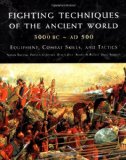 |
Fighting Techniques of the Ancient World (3000 B.C. to 500 A.D.): Equipment, Combat Skills, and Tactics
Rob S. Rice, Simon Anglim, Phyllis Jestice, Scott Rusch, John Serrati |
|
A comprehensive and heavily illustrated guide to warfare in the ancient world.
This
essential guide to ancient warfare describes the fighting methods of soldiers in Europe and the Middle East
in an age before gunpowder. From a detailed examination of the individual components of an ancient army and
their equipment, to a fascinating exploration of ancient battle strategies, siege warfare, and naval battles,
it explores the unique tactics required to win battles with the technology available. Using specially
commissioned color and black-and-white artwork and 24 full-color tactical maps, this book shows in great
detail the methods by which armies, including Assyrians and Roman forces, prevailed over their foes, and why
other armies were less successful. This is a must-read for any reader interested in ancient warfare.
|
|
 |
Fighting Techniques of the Medieval World: Equipment, Combat Skills and Tactics
Matthew Bennett, Jim Bradbury, Kelly DeVries, Iain Dickie, Phyllis Jestice |
|
Fighting Techniques of the Medieval World describes the fighting techniques of soldiers in
Europe and the Near East in an age before the widespread use of gunpowder. The book explores the unique
tactics required to win battles with the technology available, and demonstrates how little has changed in
some respects of the art of war.
The book is divided into five chapters covering the main elements of
medieval warfare: infantry, cavalry, generalship, siege warfare, and naval combat. Each chapter features four
major battles to demonstrate the strengths, pitfalls, and characteristics of the style of warfare.
Using specially-commissioned color and black-and-white artwork to illustrate the battles, equipment, and
tactics of the era, Fighting Techniques of the Medieval World shows in detail the methods by which armies,
including Norman, Crusader, and Mongol forces, prevailed over their foes, and why other armies were less
successful. The book is an essential companion for any reader interested in warfare in the medieval age.
|
|
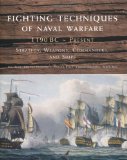 |
Fighting Techniques of Naval Warfare: Strategy, Weapons, Commanders, and Ships: 1190 BC - Present
Amber Books, Iain Dickie, Phyllis Jestice, Christer Jorgensen, Rob S. Rice, Martin J. Dougherty |
|
Fighting Techniques of Naval Warfare analyzes the tactics, techniques, and weaponry of
naval warfare from the ancient period to the modern day. Beginning with Egyptian Pharaoh Ramses III’s victory
over the piratical Sea Peoples in 1190 BC, and coming up-to-date with the use of aircraft carriers and the
latest computerized weapons technology, the book covers every significant development in naval warfare over
the last 3000 years.
The first chapter covers some of the major naval engagements of the ancient era,
including the Greeks’ emphatic victory over the Persians at Salamis (480 BC) and Octavian’s decisive defeat
of Mark Anthony at Actium (31 BC). The use of galleys as the premier fighting ship for more than 2000 years
is explored in detail. The second chapter investigates the development of new types of fighting vessels, such
as the northern European cog, at battles such as Sluys (1340 AD), which also offering expert analysis of the
introduction of cannon at Hansando (1592) and the spectacular use of
fire ships against the Spanish Armada at
Gravelines (1588). The third chapter examines the age of sail, from the early seventeenth century to the late
eighteenth century, through famous encounters at the Downs (1639), Medway (1667), and Quiberon Bay (1759).
The chapter rounds off with the Russo-Swedish battle of Svensksund (1790), demonstrating one of the last uses
of galleys in European naval warfare. The fourth chapter surveys the transformation from the employment of
the last great fighting sailing ships at battles such as Copenhagen (1801) and Trafalgar (1805) to the advent
of steam-powered ironclads at Mobile Bay (1864). The final chapter covers the development and use of armored
battleships at Tsushima (1905) and Jutland (1916), and the revolutionary introduction of aircraft carriers at
Cape Matapan (1941) and Midway (1942).
Using specially-commissioned color maps and black-and-white
artworks, Fighting Techniques of Naval Warfare is an essential companion for anyone interested in naval
warfare. |
|
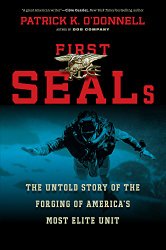 |
First SEALs: The Untold Story of the Forging of America’s Most Elite Unit
Patrick K. O'Donnell |
|
Beginning in the summer of 1942, an extraordinary group of men—among them a dentist, a Hollywood movie star, an archaeologist, California surfers,
and even former enemies of the Allies—united to form an exceptional unit that would forge the capabilities of the Navy’s Sea, Air, and Land (SEAL) Teams. Known as the
Maritime Unit, it comprised America’s first swimmer-commandos, an elite breed of warrior-spies who were decades ahead of their time when they created the tactics,
technology, and philosophy that inspire today’s Navy SEALs.
The pioneering men of the Maritime Unit conducted some of the most daring operations behind enemy
lines and even survived one of the Third Reich’s infamous concentration camps. But after the war, their astonishing record of activity and achievement was classified,
lost, and largely forgotten...until now.
|
|
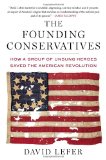 |
The Founding Conservatives: How a Group of Unsung Heroes Saved the American Revolution
David Lefer |
|
A nation at war and widespread mistrust of the military. A financial crash and an endless
economic crisis. A Congress so divided it barely functioned. Bitter partisan disputes over everything from
taxation and the distribution of wealth to the role of banks and corporations in society. Welcome to the
world of the Founding Fathers.
According to most narratives of the American Revolution, the founders
were united in their quest for independence and steadfast in their efforts to create a stable, effective
government. But the birth of our republic was far more complicated than many realize. The Revolution was
nearly derailed by extremists who wanted to do too much, too quickly and who refused to rest until they had
remade American society. If not for a small circle of conservatives who kept radicalism in check and promoted
capitalism, a strong military, and the preservation of tradition, our country would be vastly different
today.
In the first book to chronicle the critical role these men played in securing our freedom,
David Lefer provides an insightful and gripping account of the birth of modern American conservatism and its
impact on the earliest days of our nation.
Among these founding conservatives were men like John
Dickinson, who joined George Washington’s troops in a battle against the British on July 4, 1776, and that
same week drafted the Articles of Confederation; James Wilson, a staunch free-market capitalist who defended
his home against a mob of radicals demanding price controls and in the process averted a bloody American
equivalent to Bastille Day; Silas Deane, who mixed patriotism with profit seeking while petitioning France to
aid America; and Robert Morris, who financed the American Revolution and founded the first bank and the first
modern multinational corporation in the United States.
Drawing on years of archival research, Lefer
shows how these and other determined founders championed American freedom while staying faithful to their
ideals. In the process, they not only helped defeat the British but also laid the groundwork for American
capitalism to thrive.
The Founding Conservatives is an intellectual adventure story, full of gunfights
and big ideas. It is also an extraordinary reminder of the punishing battles our predecessors fought to
create and maintain the free and prosperous nation we know today. |
|
 |
In the Kingdom of Ice: The Grand and Terrible Polar Voyage of the USS Jeannette
Hampton Sides |
|
In the late nineteenth century, people were obsessed by one of the last unmapped areas of the globe: the North Pole. No one knew what existed
beyond the fortress of ice rimming the northern oceans, although theories abounded. The foremost cartographer in the world, a German named August Petermann,
believed that warm currents sustained a verdant island at the top of the world. National glory would fall to whoever could plant his flag upon its shores.
James Gordon Bennett, the eccentric and stupendously wealthy owner of The New York Herald, had recently captured the world's attention by dispatching Stanley to
Africa to find Dr. Livingstone. Now he was keen to re-create that sensation on an even more epic scale. So he funded an official U.S. naval expedition to reach
the Pole, choosing as its captain a young officer named George Washington De Long, who had gained fame for a rescue operation off the coast of Greenland. De Long
led a team of 32 men deep into uncharted Arctic waters, carrying the aspirations of a young country burning to become a world power. On July 8, 1879, the USS
Jeannette set sail from San Francisco to cheering crowds in the grip of "Arctic Fever."
The ship sailed into uncharted seas, but soon was trapped in
pack ice. Two years into the harrowing voyage, the hull was breached. Amid the rush of water and the shrieks of breaking wooden boards, the crew abandoned the
ship. Less than an hour later, the Jeannette sank to the bottom, and the men found themselves marooned a thousand miles north of Siberia with only the barest
supplies. Thus began their long march across the endless ice—a frozen hell in the most lonesome corner of the world. Facing everything from snow blindness and
polar bears to ferocious storms and frosty labyrinths, the expedition battled madness and starvation as they desperately strove for survival. |
|
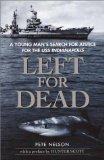 |
Left for Dead: A Young Man's Search for Justice for the USS Indianapolis
Peter Nelson |
|
Hunter Scott, an 11-year-old boy in Pensacola, Florida, was watching the movie Jaws,
listening to Captain Quint tell the story of the sinking of the USS Indianapolis at the end of World War II.
“Eleven hundred men went into the water. Very first light, the sharks come cruising. . . .” Hunter had a
simple question: Was this a true story?
The story of the USS Indianapolis, the worst naval disaster in
American history, is indeed true. So is the story of the shameful court-martial of the ship’s captain,
shameful because the loss of the ship was not his fault, and the Navy knew it. Hunter Scott became the
catalyst for the survivors’ efforts to clear their captain’s name and set the record straight. This is the
story of the ship, her brave sailors, their wronged captain, and a young man’s crusade to right an old
injustice.
|
|
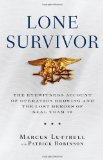 |
Lone Survivor: The Eyewitness Account of Operation Redwing and the Lost Heroes of SEAL Team 10
Marcus Luttrel |
|
*Autographed by the author.
On a clear night in late June 2005, four U.S. Navy SEALs left their base in northern Afghanistan
for the mountainous Pakistani border. Their mission was to capture or kill a notorious al Qaeda leader known to be
ensconced in a Taliban stronghold surrounded by a small but heavily armed force. Less then twenty-four hours later,
only one of those Navy SEALs remained alive.
This is the story of fire team leader Marcus Luttrell, the sole
survivor of Operation Redwing, and the desperate battle in the mountains that led, ultimately, to the largest loss
of life in Navy SEAL history. But it is also, more than anything, the story of his teammates, who fought
ferociously beside him until he was the last one left-blasted unconscious by a rocket grenade, blown over a cliff,
but still armed and still breathing. Over the next four days, badly injured and presumed dead, Luttrell fought off
six al Qaeda assassins who were sent to finish him, then crawled for seven miles through the mountains before he
was taken in by a Pashtun tribe, who risked everything to protect him from the encircling Taliban killers.
A
six-foot-five-inch Texan, Leading Petty Officer Luttrell takes us, blow-by-blow, through the brutal training of
America's warrior elite and the relentless rites of passage required by the Navy SEALs. He transports us to a
monstrous battle fought in the desolate peaks of Afghanistan, where the beleaguered American team plummeted
headlong a thousand feet down a mountain as they fought back through flying shale and rocks. In this rich , moving
chronicle of courage, honor, and patriotism, Marcus Luttrell delivers one of the most powerful narratives ever
written about modern warfare-and a tribute to his teammates, who made the ultimate sacrifice for their country. |
|
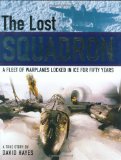 |
The Lost Squadron: A Fleet of Warplanes Locked in Ice for Fifty Years
David Hayes |
|
A lavishly illustrated work records the amazing reclamation of a fleet of American World
War II warplanes buried in ice in Greenland since the war and recovered by two amateur aviation enthusiasts.
|
|
 |
The Midnight Ride of Paul Revere
Henry Wadsworth Longfellow |
|
In his magnificent interpretation of Henry Wadsworth
Longfellow's poem, Christopher Bing
seamlessly weaves history and imagination into a rich portrait of an American hero. A meticulous researcher,
Bing includes material that provides texture to history, maps that follow the British campaign to quell the
rebellious citizenry, as well as the patriots ride into the Massachusetts night of April, 1775. Documents
firmly affixed into the book, including the British generals orders to his troops and Reveres own deposition
relating the events, give the reader not only a visual experience but a tactile one as well. Far more than a
brilliantly presented history lesson, this book represents a tour de force of coherent artistic vision. In an
extraordinary series of rich and moody engravings, from the mysteriously shimmering rigging of the British
sloop, The Somerset, looming in a moonlit Boston harbor to the taut urgency of a man and his horse galloping
at a combustible moment in the American experience, this book illuminates our
country's past unlike any other.
|
|
 |
My American Journey
Colin L. Powell |
|
General Powell may have undertaken this book as a form of paid political test
marketing, but it turns out to be a success of an altogether different kind. We don't learn from this
book if Powell is presidential material, but his recounting of the various steps of his career give us
an unrivaled view of the ins and outs of military bureaucracy and shows how the modern American
military, with its consistent emphasis on can-do attitudes and actual results, is a much more congenial
place for realizing one's talents than our still-alarmingly pigeonholing general society.
|
|
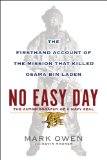 |
No Easy Day: The Firsthand Account of the Mission That Killed Osama Bin Laden
Mark Owen, Kevin Maurer |
|
For the first time anywhere, the first-person account of the planning and execution of the
Bin Laden raid from a Navy Seal who confronted the terrorist mastermind and witnessed his final moments.
From the streets of Iraq to the rescue of Captain Richard Phillips in the Indian Ocean, and from the
mountaintops of Afghanistan to the third floor of Osama Bin Laden’s compound, operator Mark Owen of the U.S.
Naval Special Warfare Development Group--commonly known as SEAL Team Six-- has been a part of some of the
most memorable special operations in history, as well as countless missions that never made headlines.
No Easy Day puts readers alongside Owen and the other handpicked members of the twenty-four-man team as they
train for the biggest mission of their lives. The blow-by-blow narrative of the assault, beginning with the
helicopter crash that could have ended Owens's life straight through to the radio call confirming Bin Laden’s
death, is an essential piece of modern history.
In No Easy Day, Owen also takes readers onto the field
of battle in America’s ongoing War on Terror and details the selection and training process for one of the
most elite units in the military. Owen’s story draws on his youth in Alaska and describes the SEALs’ quest to
challenge themselves at the highest levels of physical and mental endurance. With boots-on-the-ground detail,
Owen describes numerous previously unreported missions that illustrate the life and work of a SEAL and the
evolution of the team after the events of September 11. In telling the true story of the SEALs whose talents,
skills, experiences, and exceptional sacrifices led to one of the greatest victories in the War on Terror,
Mark Owen honors the men who risk everything for our country, and he leaves readers with a deep understanding
of the warriors who keep America safe. |
|
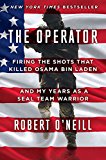 |
The Operator: Firing the Shots that Killed Osama bin Laden and My Years as a SEAL Team Warrior
Robert O'Neill |
|
A stirringly evocative, thought-provoking, and often jaw-dropping account, The Operator ranges across SEAL Team Operator Robert
O’Neill’s awe-inspiring four-hundred-mission career, which included his involvement in attempts to rescue “Lone Survivor” Marcus Luttrell and
abducted-by-Somali-pirates Captain Richard Phillips and which culminated in those famous three shots that dispatched the world’s most wanted
terrorist, Osama bin Laden.
In these pages, O’Neill describes his idyllic childhood in Butte, Montana; his impulsive decision to join the
SEALs; the arduous evaluation and training process; and the even tougher gauntlet he had to run to join the SEALs’ most elite unit. After
officially becoming a SEAL, O’Neill would spend more than a decade in the most intense counterterror effort in US history. For extended periods,
not a night passed without him and his small team recording multiple enemy kills—and though he was lucky enough to survive, several of the SEALs
he’d trained with and fought beside never made it home.
The Operator describes the nonstop action of O’Neill’s deployments in Iraq and
Afghanistan, evokes the black humor of years-long combat, brings to vivid life the lethal efficiency of the military’s most selective units, and
reveals firsthand details of the most celebrated terrorist takedown in history. |
|
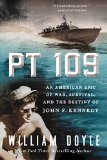 |
PT 109: An American Epic of War, Survival, and the Destiny of John F. Kennedy
William Doyle |
|
In the early morning darkness of August 2, 1943, during a chaotic nighttime skirmish amid the Solomon Islands, the Japanese destroyer Amagiri
barreled through thick fog and struck the U.S. Navy's motor torpedo boat PT 109, splitting the craft nearly in half and killing two American sailors instantly.
The sea erupted in flames as the 109's skipper, John F. Kennedy, and the ten surviving crewmen under his command desperately clung to the sinking wreckage; 1,200
feet of ink-black, shark-infested water loomed beneath. "All hands lost," came the reports back to the Americans' base: no rescue was coming for the men of PT 109.
Their desperate ordeal was just beginning—so too was one of the most remarkable tales of World War II, one whose astonishing afterlife would culminate two decades
later in the White House.
Drawing on original interviews with the last living links to the events, previously untapped Japanese wartime archives, and a
wealth of archival documents from the Kennedy Library, including a lost first-hand account by JFK himself, bestselling author William Doyle has crafted a thrilling
and definitive account of the sinking of PT 109 and its shipwrecked crew's heroics. Equally fascinating is the story's second act, in which Doyle explores in new
detail how this extraordinary episode shaped Kennedy's character and fate, proving instrumental to achieving his presidential ambitions: "Without PT 109, there
never would have been a President John F. Kennedy," declared JFK aide David Powers.
Featuring castaways on a deserted island, a spy network of Solomon Island
natives, an Australian coast watcher hidden on the side of a volcano, an S.O.S. note carved into a coconut, and a daring rescue attempt led by Kennedy's fellow
American PT boats, PT 109 is an unforgettable American epic of war and destiny. |
|
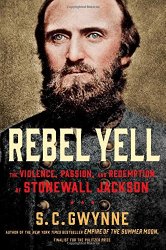 |
Rebel Yell
S. C. Gwynne |
|
Stonewall Jackson has long been a figure of legend and romance. As much as any person in the Confederate pantheon, even Robert E. Lee, he
embodies the romantic Southern notion of the virtuous lost cause. Jackson is also considered, without argument, one of our country’s greatest military figures.
His brilliance at the art of war tied Abraham Lincoln and the Union high command in knots and threatened the ultimate success of the Union armies. Jackson’s
strategic innovations shattered the conventional wisdom of how war was waged; he was so far ahead of his time that his techniques would be studied generations
into the future.
In April 1862 Jackson was merely another Confederate general in an army fighting what seemed to be a losing cause. By June he had
engineered perhaps the greatest military campaign in American history and was one of the most famous men in the Western world. He had, moreover, given the
Confederate cause what it had recently lacked—hope—and struck fear into the hearts of the Union.
|
|
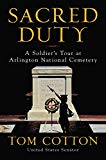 |
Sacred Duty: A Soldier's Tour at Arlington National Cemetery
Senator Tom Cotton |
|
An extraordinary journey behind the scenes of Arlington National Cemetery, Senator Tom Cotton’s Sacred Duty offers an intimate and
inspiring portrait of “The Old Guard,” the revered U.S. Army unit whose mission is to honor our country’s fallen heroes on the most hallowed ground
in America.
Cotton was a platoon leader with the storied 3rd U.S. Infantry Regiment—The Old Guard—between combat tours in Iraq and Afghanistan.
At the height of the Iraq Surge, he carried the flag-draped remains of his fallen comrades off of airplanes at Dover Air Force Base, and he laid them
to rest in Arlington’s famed Section 60, “the saddest acre in America.” He also performed hundreds of funerals for veterans of the Greatest Generation,
as well as the Korean and Vietnam Wars.
The Old Guard has embodied the ideals of honor and sacrifice across our nation’s history. America’s oldest
active-duty regiment, dating back to 1784, The Old Guard conducts daily military-honor funerals on the 624 rolling acres of Arlington, where generations
of American heroes rest. Its soldiers hold themselves to the standard of perfection in sweltering heat, frigid cold, and driving rain. Every funeral is
a no-fail, zero-defect mission, whether honoring a legendary general or a humble private.
In researching and writing the book, Cotton returned
to Arlington and shadowed the regiment’s soldiers, from daily funerals to the state funeral of President George H. W. Bush to the Tomb of the Unknown
Soldier, reliving the honor—and the challenges—of duty at the nation’s “most sacred shrine.”
Part history of The Old Guard, part memoir of
Cotton’s time at Arlington, part intimate profile of the today’s soldiers, Sacred Duty is an unforgettable testament to the timeless power of service
and sacrifice to our nation. |
|
 |
Stalingrad: The City that Defeated the Third Reich
Jochen Hellbeck |
|
The turning point of World War II came at Stalingrad. Hitler’s soldiers stormed the city in September 1942 in a bid to complete the conquest
of Europe. Yet Stalingrad never fell. After months of bitter fighting, 100,000 surviving Germans, huddled in the ruined city, surrendered to Soviet troops.
During the battle and shortly after its conclusion, scores of Red Army commanders and soldiers, party officials and workers spoke with a team of historians who
visited from Moscow to record their conversations. The tapestry of their voices provides groundbreaking insights into the thoughts and feelings of Soviet citizens
during wartime.
Legendary sniper Vasily Zaytsev recounted the horrors he witnessed at Stalingrad: “You see young girls, children hanging from trees in the
park.[...] That has a tremendous impact.” Nurse Vera Gurova attended hundreds of wounded soldiers in a makeshift hospital every day, but she couldn’t forget one
young amputee who begged her to avenge his suffering. “Every soldier and officer in Stalingrad was itching to kill as many Germans as possible,” said Major Nikolai
Aksyonov.
These testimonials were so harrowing and candid that the Kremlin forbade their publication, and they were forgotten by modern history—until now.
Revealed here in English for the first time, they humanize the Soviet defenders and allow Jochen Hellbeck, in Stalingrad, to present a definitive new portrait of
the most fateful battle of World War II. |
|
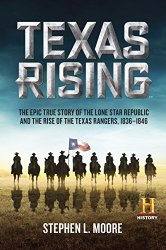 |
Texas Rising
Stephen L. Moore |
|
The official nonfiction companion to HISTORY’s dramatic series Texas Rising (created by the same team that made the ratings record-breaker
Hatfield's & McCoy's): a thrilling new narrative history of the Texas Revolution and the rise of the legendary Texas Rangers who patrolled the violent western
frontier.
March 1836: The Republic of Texas, just weeks old, is already near collapse. William Barret Travis and his brave defenders of the Alamo in
San Antonio have been slaughtered. Hundreds more Texan soldiers have surrendered at Goliad, only to be marched outside the fortress and executed by order of
the ruthless Mexican general Santa Anna, a dictator denying Texans their freedom and liberty.
General Sam Houston, a hard-drinking, hot-tempered opportunist,
remains in command of a small band of volunteer colonists, mercenaries, and the newly organized Texas Rangers. They are the last hope for Texas to challenge the
relentless advance of Santa Anna’s much larger Mexican Army, yet many of them curse Houston, enraged by his decision to retreat across Texas before the advancing
enemy.
The exhausted, outnumbered rebels will meet their destiny on an empty plain near the Gulf Coast next to the San Jacinto River and make a stand that
determines the fate of the young nation. “Remember the Alamo!” and “Remember Goliad!” will be the battle cries, and the order of the day will echo Travis’s at the
Alamo: Victory or death.
Acclaimed Texas historian Stephen L. Moore’s new narrative history tells the full, thrilling story of the Texas Revolution from
its humble beginnings to its dramatic conclusion, and reveals the contributions of the fabled Texas Rangers both during the revolution and in the frontier Indian
wars that followed. |
|
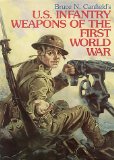 |
U.S. Infantry Weapons of the First World War
Bruce N. Canfield |
|
The book to end all books about the war to end all wars! The definitive guide to U.S.
infantry weapons of World War I. Best-selling author and arms expert Bruce N. Canfield gives you the inside
scoop on everything that was carried into combat by the Army and Marines, including rifles, pistols, shotguns,
automatic rifles, machine guns, bayonets, knives, grenades, mortars, flame throwers and accessories. It's all
in here! Filled with the kind of practical, "hands-on" advice and information that you will turn to again and
again, with unique "collector's notes" that tell you what you need to know about markings, rarity, rebuilds
and fakes. Nowhere else will you find this amount of useful information under one cover - and it's complete
with exciting combat reports describing how this equipment performed at the front! The First World War is
rapidly becoming the hottest topic in military history. Don't miss this exciting opportunity to learn all
about the weapons of the Doughboys, fully illustrated with more than 500 large, clear photographs plus
numerous tables and historical illustrations.
|
|
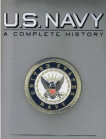 |
U.S. Navy A Complete History
M. Hill Goodspeed |
|
Building on the official Navy chronologies, this handsome book presents a year-by-year
summary of significant naval activities from 1775 to the present. Key historical entries, along with
significant operations, technological advances, and narratives of the women and men instrumental in shaping
the organization, are written by leading experts in each subject. With a distinctive battleship cover and
1000 photographs, this authoritative and encyclopedic account of the U.S. Navy is an important addition to
any military history collection.
|
|
 |
U.S. Small Arms in World War II
Tom Laemlein |
|
From the humorous to the poignant, this incredible collection of wartime images reveals
ordinary GIs on the frontline. From the deserts of North Africa to Normandy and from Guadalcanal to Iwo Jima,
every theater of war is covered and each image details the small arms that the average GI carried with him to
wage war and win an historic victory. All the key small arms, from the commonplace ³Grease Gun² to the rare
Johnson rifle, and including pistols, rifles, carbines, combat shotguns, automatic rifles and machine guns
are included. Tom Laemlein has created a unique photo study that draws together a rare collection of classic
images (many never before seen). These images together with a short introduction to each weapon tells the
combat story of the US Army at war.
|
|
 |
War Slang
Paul Dickson |
|
Paul Dickson, one of the country's leading authorities on American slang, offers the
first comprehensive collection of fighting words and war time phrases Americans have used from the Civil
War to the Iraq War. This definitive dictionary, updated and expanded to include the events of September
11 and the war on terrorism, is arranged war by war and reveals military slang at its most colorful,
innovative, brutal, and ironic. Dickson also shows how language mirrors the unique experience of each
conflict. For example, World War II brought unprecedented linguistic experimentation, innovation, and
abbreviation, including "dogface, quisling, blitz, and the immortal GI as well as the rich stew of
pidgin English used to communicate with the native peoples of the South Pacific. Raw frustration and
cynicism surface in the slang of the Vietnam War, with a record number of synonyms for the verb to kill,
including blow away, dust, get some grease, waste, and zap.
Beginning with a brief overview of the
Revolutionary War, War Slang reveals the thoughts, attitudes, and environments of America’s fighting men
and women from the last 230 years. An incomparable reference work, War Slang serves the language lover
and military historian alike by adding a brilliant and provocative new dimension to the understanding of
war.
|
|
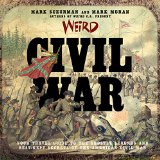 |
Weird Civil War: Your Travel Guide to the Ghostly Legends and Best-Kept Secrets of the American Civil War
Mark Sceurman |
|
Weird Civil War delves into the peculiar history and ghastly legacy of the bloodiest period in American history, featuring the era's most gripping
tragic tales, fascinating facts, spooky scenarios, and eccentric characters. This brand-new volume—which compiles the most compelling Civil War stories from the
bestselling Weird series—will excite precocious history students, Civil War buffs, and the multitude of Americans-young and old-with historical ties to the
Confederate and Union armies.
|
|
 |
The World's Worst Weapons
Martin J Dougherty |
|
The World s Worst Weapons is an entertaining and informative guide to the small arms,
artillery, tanks, ships, missiles, and aircraft that proved to be utter failures.
|
|
|

